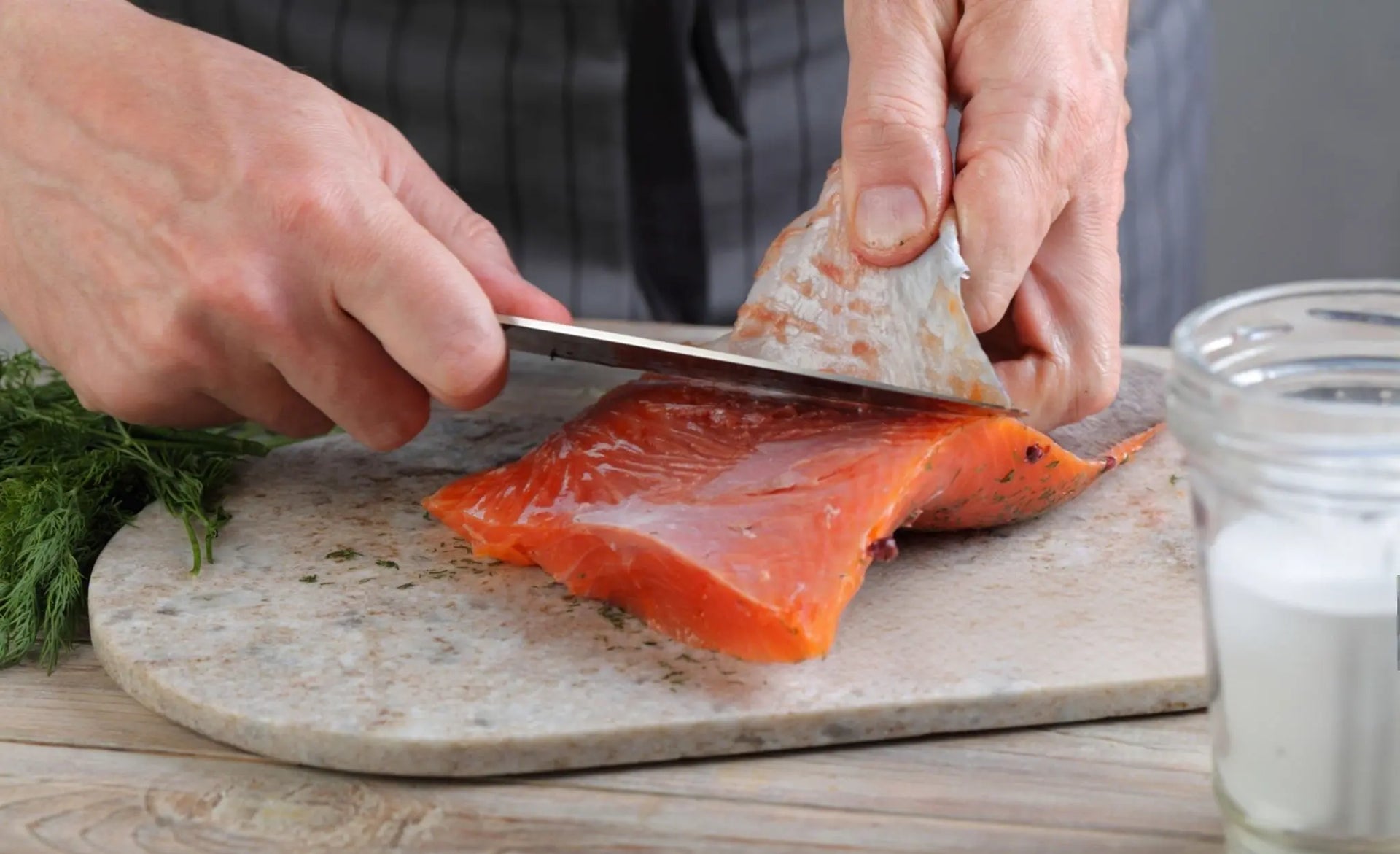Salmon skin is completely edible and packed with nutrition. It contains omega-3 fatty acids, protein, vitamins, and minerals that benefit heart health, reduce inflammation, and support overall wellness.
Despite these benefits, there are good reasons you might want to remove salmon skin:
-
Some recipes simply work better without skin
-
The texture can be unpleasant if not cooked properly
-
Raw preparations like sushi typically require skinless salmon
-
Skin can contain environmental contaminants, especially in farmed salmon
If you're concerned about contaminants, wild-caught Pacific salmon is generally a safer choice than farmed Atlantic varieties.
The Right Knife Can Make All the Difference

Before learning how to remove skin from salmon, make sure you have the right knife. A sharp, flexible boning knife is ideal for this job.
Kyoku knives, especially their Japanese-style boning knives, work perfectly because they:
-
Have the right flexibility to follow the contour of the fish
-
Stay sharp longer for clean, precise cuts
-
Provide good grip when handling slippery fish
Related: The Difference Between Fillet Knives and Boning Knife
How to Remove Skin from Salmon in 6 Steps
Ready to learn how to get skin off salmon? Here's a simple method that works every time:
1. Prep your workspace
Place your salmon on a cutting board, skin-side down. Having a clean, stable surface makes everything easier.
2. Find the right spot to start
At the tail end of the fillet, create a small cut between the flesh and skin, leaving enough skin to grip.

3. Get a good grip
Hold the tail end of the skin with your non-knife hand. Some people find sprinkling salt on their fingers helps with grip.
Related: How to properly hold a knife
4. Position your knife correctly
Hold your knife at a slight angle against the skin, not cutting downward but sideways.
5. Use a sawing motion
With your knife, make gentle sawing motions while pulling the skin taut in the opposite direction. Let the knife do the work!

6. Keep the knife against the skin
The goal is to leave all the flesh on the fillet and none on the skin.
Pro Tips for Perfect Salmon Skin Removal
-
Slightly frozen salmon (15 minutes in the freezer) is often easier to work with
-
Always cut away from yourself for safety
-
Don't rush—slow and steady wins this race
-
Practice makes perfect, so don't worry if your first attempt isn't flawless

When to Keep the Salmon Skin On
Sometimes that crispy salmon skin is the best part! If you do decide to skin the salmon skin please note:
If you're pan-searing or grilling salmon, consider keeping the skin on. It helps hold the delicate fish together and can become deliciously crispy.
Just remember to scale the skin first by scraping it gently with the back of your knife.
Conclusion

Having trouble with how to remove skin from salmon? It might be your knife. A quality knife like those from Kyoku's Japanese knives collection makes the process much smoother.
The precision edge and perfect balance of a good fillet knife turns this potentially tricky task into an easy one!
What's your preference—skin on or off? Either way, with the right technique and tools, you'll be prepping salmon like a pro in no time!
Source:
Jon Johnson, Medical News Today (2023) “Can You Eat Salmon Skin”
Kathryn Watson, Healthline (2017) “Is Salmon Skin Safe to Eat?”
Ángeles Acosta, MUI Kitchen (2025) “Is Eating Salmon Skin Healthy?”
Triasha Barua, Eco Wiser. (2024) “Unveiling the Health and Eco-Impacts of Salmon Skin”




